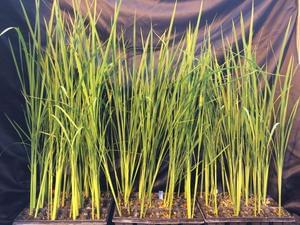5D multi-omic technology is helping to answer vital questions in spatial biology at unprecedented speed.



The future of sustained space habitation depends on our ability to grow fresh food away from Earth. The revolutionary new collaborative Moon-Rice project is using cutting-edge experimental biology to create an ideal future food crop that can be grown in future deep-space outposts, as well as in extreme environments back on Earth.


Three-dimensional (3D) imaging is essential for investigating cellular structure and dynamics. Traditional optical methods rely on adhesive or mechanical forces to hold and scan cells, which limit their applicability to suspended cells and may induce stress responses. Developing a non-contact, all-optical 3D imaging technique for live suspended cells remains a major challenge in advancing in situ biological research.
In a study published in Science Advances, Prof. Yao Baoli from the Xi’an Institute of Optics and Precision Mechanics (XIOPM) of the Chinese Academy of Sciences and Prof. Olivier J. F. Martin, from the Swiss Federal Institute of Technology, Lausanne, developed the optical tweezer sectioning microscopy (OTSM), enabling all-optical 3D imaging of suspended live cells, which offers a powerful new tool for live-cell imaging, dynamic biological studies and multicellular assembly.
Researchers developed OTSM by integrating holographic optical tweezers (HOTs) with structured illumination microscopy (SIM).


Join Dame Angela McLean, the Government’s Chief Scientific Adviser, as she discusses the transformative potential of the field of engineering biology.
This Discourse was recorded at the Ri on 25 April 2025. Find out more about Discourses here: https://www.rigb.org/explore-science/explore/blog/history-fr…-discourse.
Watch the Q&A here (exclusively for subscribers): https://youtu.be/GKRTtoEpFeI
Join this channel to get access to perks:
https://www.youtube.com/channel/UCYeF244yNGuFefuFKqxIAXw/join.
The field of engineering biology uses the whole span of biological sciences in conjunction with technology and engineering to benefit multiple sectors and our society more broadly.
But as a relatively new field, scientists still have many unanswered questions. What are the key opportunities and risks it presents? What barriers stand in the way of engineering biology revolutionising society?
Dame Angela McLean, the Government Chief Scientific Adviser, has been considering the scientific evidence behind the many claims – both utopian and dystopian – associated with research and innovation in engineering biology. In this Discourse, Dame Angela shares what she has learned from her “Year of Engineering Biology”, describing her vision for this suite of technologies and the applications she expects to emerge over the next decade and beyond.

UCLA researchers have made a significant discovery showing that biological brains and artificial intelligence systems develop remarkably similar neural patterns during social interaction. This first-of-its-kind study reveals that when mice interact socially, specific brain cell types synchronize in “shared neural spaces,” and AI agents develop analogous patterns when engaging in social behaviors.
The study, “Inter-brain neural dynamics in biological and artificial intelligence systems,” appears in the journal Nature.
This new research represents a striking convergence of neuroscience and artificial intelligence, two of today’s most rapidly advancing fields. By directly comparing how biological brains and AI systems process social information, scientists reveal fundamental principles that govern social cognition across different types of intelligent systems.

Clean, safe water is vital for human health and well-being. It also plays a critical role in our food security, supports high-tech industries, and enables sustainable urbanization. However, detecting contamination quickly and accurately remains a major challenge in many parts of the world.
A new device developed by researchers at the National University of Singapore (NUS) has the potential to significantly advance water quality monitoring and management.
Taking inspiration from the biological function of the oily protective layer found on human skin, a team of researchers led by Associate Professor Benjamin Tee from the Department of Materials Science and Engineering in the College of Design and Engineering at NUS translated this concept into a versatile material, named ReSURF, capable of spontaneously forming a water-repellent interface.

When the first reports of a new COVID-19 variant emerge, scientists worldwide scramble to answer a critical question: Will this new strain be more contagious or more severe than its predecessors? By the time answers arrive, it’s frequently too late to inform immediate public policy decisions or adjust vaccine strategies, costing public health officials valuable time, effort, and resources.
In a pair of recent publications in Proceedings of the National Academy of Sciences, a research team in the Department of Chemistry and Chemical Biology combined biophysics with artificial intelligence to identify high-risk viral variants in record time—offering a transformative approach for handling pandemics. Their goal: to get ahead of a virus by forecasting its evolutionary leaps before it threatens public health.
“As a society, we are often very unprepared for the emergence of new viruses and pandemics, so our lab has been working on ways to be more proactive,” said senior author Eugene Shakhnovich, Roy G. Gordon Professor of Chemistry. “We used fundamental principles of physics and chemistry to develop a multiscale model to predict the course of evolution of a particular variant and to predict which variants will become dominant in populations.”